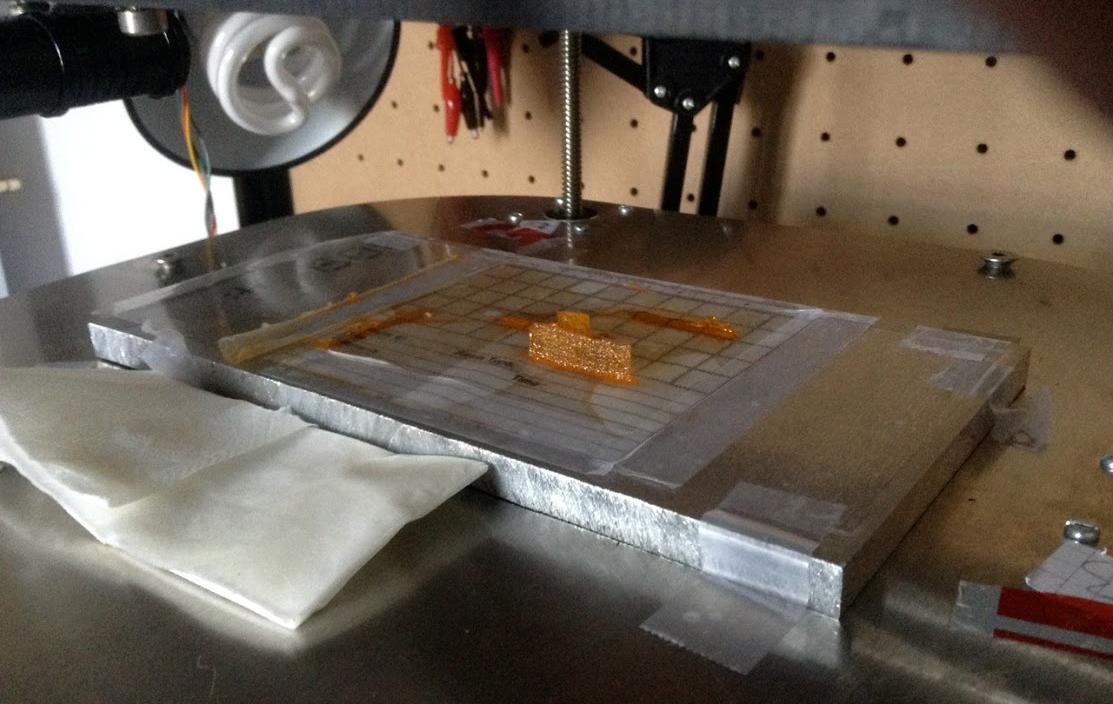Results 1 to 10 of 11
-
09-09-2014, 09:15 AM #1
Sub $2000 Polymer Jetting 3D Printing being developed
Most of us are familiar with the PolyJet 3D printers by Stratasys. They are high quality, very expensive polymer jetting machines that utilize UV likes to cure a liquid resin. These printers are so pricey that they are reserved mostly for large companies. One man, name David Feintrenie is in the process of developing an affordable polymer jetting 3D printer, and it costs less than $2000 to build. While it is not yet capable to coming close to the quality of the Stratasys PolyJet 3D printers, Feintrenie hopes to get it there soon. Read more about this 3D printer at: http://3dprint.com/14131/polymer-jetting-3d-printer/

-
09-09-2014, 12:05 PM #2
-
09-09-2014, 12:57 PM #3
Yeah. Based on the photos, the results aren't yet comparable. Objet printers produce a quality and smoothness similar to SLA, but in a bunch of different materials, depending on the printer model. I applaud the effort, but he's taken on a daunting challenge.
It almost looks like he is trying to get the job done with a standard SLA resin.
-
09-09-2014, 01:00 PM #4Staff Engineer

- Join Date
- Dec 2013
- Location
- Georgia
- Posts
- 934
Seems like a DIY CreoPop pen rigged up as a hotend... And that ain't bad.
It looks like what he might need is a stronger UV source than a CFL desk lamp though. Some UV LEDs directly on the printing nozzle, or even a UV laser diode pointed to shine exactly on the resin as it exits the nozzle.
-
09-09-2014, 01:43 PM #5
But if it's a UV cured resin, what are the advantages compared to DLP ?
With DLP, you print one layer at a time. With his technique, you print one line at a time. How can it be as fast ? And can it print better resolution ?
-
09-09-2014, 02:04 PM #6
Eddie's article mentioned he was using a laser for the curing, so I suspect the desk lamp is probably just for post-curing (the equivalent of putting the model in sunlight). But, I can see the liquid all over the platform, so your observation that there is a curing problem is correct. I'm guessing it's materials (it looks like he's using SLA resin), but it could also be an inaccuracy between the jetting and laser.
I think the real stumbling block here is going to be the chemistry – the materials composition. But, it's hard to tell. It's basically cobbled together and the wax printer components might not be able to produce a stream that is fine and stable even if he knew the exact formula for Stratasys' various Objet offerings.
-
09-09-2014, 02:27 PM #7Staff Engineer

- Join Date
- Dec 2013
- Location
- Georgia
- Posts
- 934
Hugues, the advantage of a poly jet printer over a SLA printer is that poly jet can put down multiple materials in the same print and make watertight hollow objects (aka infill). SLA has to make objects either hollow and open or solid. Even a polyjet as rudamentary as this one can be made with multiple deposition nozzles, allowing solid parts with durable live joints, among other things.
(I missed that part about the laser curing in the article.) Basically, what he needs is uncured resin mixed with partially cured resin mixed in to give it some thickness (also to cure faster as it's depositing). Instead he seems to be trying to go for the sprayed-on method that the more expensive printers use, and it's not going to work nearly as well.
-
09-09-2014, 04:25 PM #8
I love this development but isn't the reason we aren't seeing any more of this is due to patents?
-
09-10-2014, 12:43 AM #9Technologist

- Join Date
- Oct 2013
- Location
- California LA
- Posts
- 99
I'm sure Stratasys is going to have some kind of patent to shut this project down, which really sucks.
-
09-10-2014, 05:33 AM #10
The clever thing about polyjet is that it utilises almost the exact same technology as existing inkjet printers.
Rather than starting from scratch - it might just be simpler to scavenge an existing inkjet printer head and ink feed system and just use different colour resins, attach the laser to the printhead and you've taken a lot of the heavy lifting - designwise - out of the equation. You could get a full colour uv cured resin printer cheaply and easily (well as long as you can design the rest of the machine and get the software to work. Okay maybe not 'easily' but easier than building a delivery sytem from scratch).
But - I suspect that would be stepping on stratasys toes - big time.
Although - given how long inkjet technology has been around - how many patents are still active ?








 Reply With Quote
Reply With Quote









Extruder not feeding during print,...
Today, 04:18 AM in Tips, Tricks and Tech Help